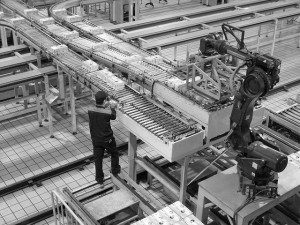 We know that factory automation streamlines production for a more efficient process. However, before implementing a new system, a company needs to determine its’ specific automation goals and needs. With clearly defined objectives, the value and resources of each project will be optimized. Knowing what you need and want from your automation project may not be as simple as it sounds. Brainstorming, collaboration, communication, and many other analytical tools are required across departments for a successful project. Don’t be overwhelmed. Use these suggestions to define your goals and begin creating a more efficient production line.
We know that factory automation streamlines production for a more efficient process. However, before implementing a new system, a company needs to determine its’ specific automation goals and needs. With clearly defined objectives, the value and resources of each project will be optimized. Knowing what you need and want from your automation project may not be as simple as it sounds. Brainstorming, collaboration, communication, and many other analytical tools are required across departments for a successful project. Don’t be overwhelmed. Use these suggestions to define your goals and begin creating a more efficient production line.
Defining Automation Goals
- Create a team to examine the project and implement a strategy. Ideally, the members of this team should include employees from every department involved with the project.
- Place one person in charge to manage the project. This person will have final responsibility for the entire process, including communication with all suppliers.
- A Technical Specification (Tech Spec) is a document that defines specific goals of the project, including expectations for design and performance of the factory automation system. The project manager should be holding regular meetings and combining input from multiple departments to form a detailed Tech Spec.
- Justification is often the most challenging aspect of planning. Before placing an order, management and the project team must be willing to commit to the value of the investment. Justification involves analysis of efficiency, quality, safety, value, and management to determine the desired ROI. Prioritizing or adding dollar amounts to certain capacities could help reveal the most important aspects of the project.
- If management and the project team agree that the investment is worth the ROI, then the project manager can begin searching for a supplier with clearly defined goals. If there is disagreement, then the project team needs to rework the Tech Spec to include as many capacities as possible within the budget.
Creating clear and concise goals requires collaboration across departments, but with open communication, specifically around desired capacities and budget, the main objectives will become well-defined. After goals have been agreed upon, it's easier to integrate a finely tuned automated system into a business to streamline work processes, increase worker safety, and enhance overall company output.
Photo Credit: Cory M. Grenier